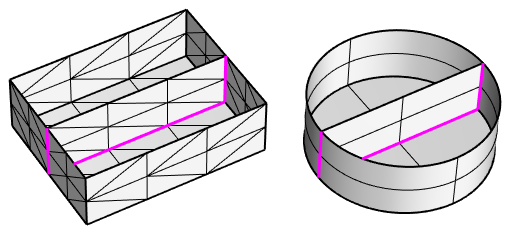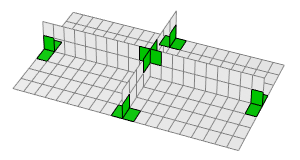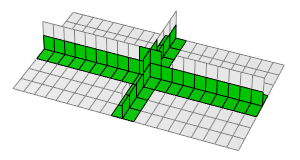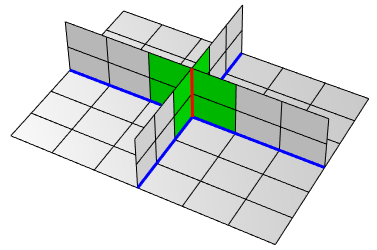ExtractMeshEdges
| Toolbar | Menu |
|---|---|
|
|
|
The ExtractMeshEdges command separates edges from the parent mesh determined by an angle between mesh face normals.
The command may help if you have a mesh that came from a polysurface but no longer have the polysurface. Using the command with the Unwelded option creates polyline approximations of where the edges of the polysurface were.
- Some STL/SLA printers have problems if meshes contain many long, thin facets. These facets can slow the printer down, produce odd results, or run the printer out of memory.
- The MeshRepair command may be useful when tuning up meshes for STL/SLA printing.
Steps
- Select a mesh.
Command-line options
Extract edges by
 Unwelded
Unwelded
Extracts edges with coincident vertices.
 Break angle
Break angle
Extracts edges based on the angle between the face normals of adjacent faces.
Greater than
Specifies the minimum break angle.
Pick a sample edge to set the minimum break angle.
Less than
Specifies a maximum break angle
Pick a sample edge to set the maximum break angle.
Increment
Sets the amount the value changed by each arrow click.
 Join results
Join results
Creates polylines from the extracted line segments.
| Toolbar | Menu |
|---|---|
|
|
|
The ExtractNonManifoldMeshEdges command extracts the mesh faces that have non-manifold edges from a mesh object.
Non-manifold edges
Edges of polysurfaces or meshes that have more than two faces joined to a single edge are non-manifold.
The illustration shows a mesh and a polysurface with non-manifold edges highlighted with the ShowEdges command.
Steps
- Start the command.
- Set command-line options.
- Select a mesh.
Command-line options
ExtractHangingFacesOnly
Only extracts the faces with non-manifold and naked edges.
Yes

No

MinimumFaceCount
Extracts the faces around a non-manifold edge shared by faces ≥ the specified number.
In the illustration, each red edge is shared by four faces. Each blue edge is shared by three faces. When MinimumFaceCount=4, only the faces around the red edges are extracted.

- Some STL/SLA printers have problems if meshes contain many long, thin facets. These facets can slow the printer down, produce odd results, or run the printer out of memory.
- The MeshRepair command may be useful when tuning up meshes for STL/SLA printing.

